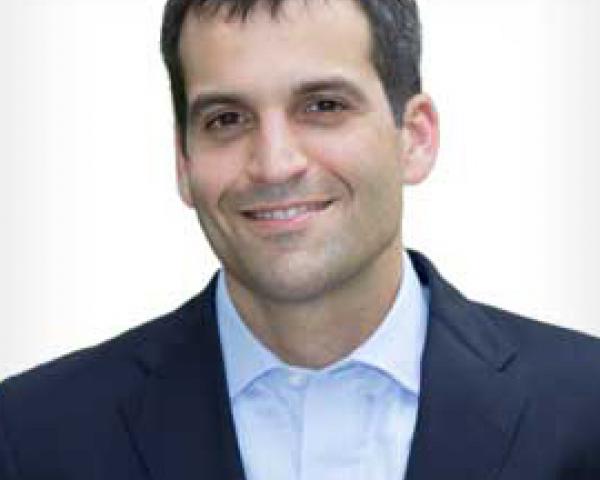2020 kicks off our sixth year of Out Front Ideas with Kimberly and Mark, and we begin the year with our 20 Issues to Watch. You will notice that many of these issues reach beyond our usual focus on workers’ comp and healthcare. We also included issues relating to risk management, workforce management and employee benefits as each affects employers.
1. 2020 Election Impact
The coming election will undoubtedly have an impact on our industry. With 11 state governors, 35 Senate seats, the entire House of Representatives and the president of the U.S. up for grabs, there could be significant change. The impact on businesses could include changes in healthcare, tax law, leave of absence regulations, independent contractor classifications and more.
Democratic control could lead to an increased federal focus on state workers’ compensation laws, including federally mandated workers’ compensation coverage for farm workers.
Virginia will likely have significant workers’ compensation reforms, with 17 bills already introduced. California also has many workers’ compensation-related bills, although recently few have become law.
2. Healthcare Watch
As healthcare continues to be the hot button issue of the 2020 elections, with it comes uncertainty about what our future coverage model may look like. Regardless of uncertainties, we know coverage is complicated, and any system-wide changes will require years of effort before implementation. Healthcare.gov saw its first rise in new enrollment since 2016, up 1.8%, while renewing enrollees were down 2.9%.
Expect to see the continued rise of employer-led solutions in 2020, with healthcare programs like Walmart’s reducing cost, decreasing disability duration and promoting the best of care for common conditions. Community and local care is also emerging, with the continuation of new entrants into the market. New benefit solutions are also expanding, including apps and platforms, such as:
- Calm, an Apple award-winning meditation app.
- SleepScore, the leading firm monitoring sleep and offering actionable advice.
- Grand Rounds, a personal health assistant firm driving quality, timely care.
- Livongo, a digital health management firm for chronic conditions.
- One Medical, a membership-based primary care platform.
3. Government Affairs and Compliance
Workers’ compensation is one of the most regulated lines of insurance, and this bureaucracy adds to the system costs. Industry engagement with regulators and legislators is increasingly important to ensure we have a voice at the table when change is contemplated. To make the system more efficient and effective, it is critical that third party administrators (TPAs), carriers and employers engage with regulators and legislators at industry events, like those held by the International Association of Industrial Accident Boards and Commissions (IAIABC), and the Southern Association of Workers’ Compensation Administrators (SAWCA).
4. Evolving Health Technology Models
Technology’s place in the evolution of health continues to expand, as seen at this year’s Digital Health Summit at the Consumer Electronics Show (CES). With tools that track health metrics and protect personal health information and with artificial intelligence, machine learning and blockchain all being major topics, the future seems to hold limitless possibilities. A few remarkable devices introduced at CES were:
- Sana Health designed a headset that uses neurowave stimulation from light and sound to reduce pain.
- Valencell launched a blood pressure sensor system that can be integrated into hearables or wearables.
- Mateo’s Smart Bathroom Mat helps individuals monitor their weight and posture using “medical-grade pressure-sensing technology.”
5. Social Inflation
You hear much about this term in the risk management marketplace, referring to the phenomena of significantly increased liability costs due to societal changes. The impact has be associated with:
- Jury behavior prediction becoming more difficult.
- Litigation financing becoming big business.
- Statutes of limitations being extended for a variety of claims, including workers’ compensation presumptions, malicious prosecutions and sexual assault.
- Courts allowing the pursuit of separate “bad faith” litigation for actions taken during the handling of a claim.
- Increased risk management exposures.
A continuing trend of social pressures could make it very difficult and expensive for companies to secure liability coverage, as carriers continue to increase rates and reduce capacity in the marketplace.
See also: Realistic Expectations for Insurance in 2020
6. The Power of Influence
Influence can be affected by cultural competencies, personal beliefs and how we feel about ourselves. Personal beliefs play a key role in influencing the level of participation and compliance, trust and communication and outcome of a workers’ compensation case. While technology advancements, wellness programs and regulatory requirements are important, an unsupportive environment, where employees feel dismissed, will affect their engagement. Companies are evolving their advocacy models and improving how they engage with injured workers and patients to accommodate the impact that personal beliefs can have on these cases.
7. Marijuana Workplace Considerations
With 11 states and D.C. having legalized recreational marijuana, it seems only a matter of time before it becomes federally legal. The Marijuana Opportunity, Reinvestment and Expungement (MORE) Act, which would federally legalize marijuana, has passed the House Judiciary Committee but will need to pass through the House and Senate for any further advancement.
State legalizations have created challenges for law enforcement and employers because there are no easy tests for impairment with the drug, and no agreed-upon standards of what level of tetrahydrocannabinol (THC) would constitute impairment. The Occupational Safety and Health Administration (OSHA) also restricts blanket post-injury drug testing policies. New THC breathalyzer tests are set to hit the market this year that could assist employers and law enforcement with setting an actionable standard.
8. Rethinking Industry Engagement
Industry engagement affects your marketing efforts, sales and client relations, customer service operations and governmental affairs. One critical area to take advantage of is educational conferences. They bring incredible value to stakeholders, but keep in mind that attendees want to see new sessions and topics presented without presenters selling their services. Additionally, using social media to not only promote your brand recognition and thought leadership but as a platform for real-time engagement with consumers advances your customer service model.
The easiest way to engage the industry and ensure relevancy is getting involved with organizations like the Risk and Insurance Management Society (RIMS), Public Agency Risk Management Association (PARMA), the Public Risk Management Association (PRIMA), the American Society for Health Care Risk Management (ASHRM), Disability Management Employer Coalition (DMEC) and the University Risk Management and Insurance Association (URMIA).
9. Safety and Loss Prevention
Emerging technologies are assisting in safety and risk management. We are seeing advancements in tech such as wearables that promote safer behaviors and drones that can view dangerous working conditions.
For all the advances we’ve made with technology, there is little that has been done to decrease injuries related to workplace violence. This challenge has been especially prevalent in the healthcare, retail, hospitality and K-12 industries.
10. Informed Pain Management
There is no ignoring the opioid epidemic in our country, but the fact remains: The pain is still very real with patients. In 2020, pay close attention to the evolution of pain management as the pressure increases greatly to limit the prescribing of opioids. Focusing on patient-centered care and taking an interdisciplinary and individualized approach to pain care are valuable options to advance patient needs.
11. Defining Value of Risk Management for C-Suite
Risk managers are facing rising insurance costs across multiple lines of coverage for the first time in a decade. This means they have to show their value to the C-Suite without the associated benefit of decreasing insurance costs. Additionally, there are many discussions taking place on the structure of risk management programs, including what duties they should perform and where they should reside within the corporate structure.
12. Talent 'Reskilling'
Often referred to as "upskilling," talent "reskilling" could help with talent gaps as well as provide further internship opportunities and assist with the training of newer employees and older workers. Moreover, training in empathy and communication furthers engagement. Organizations that are taking advantage of these particular training areas, in addition to using new technology and on-demand environments, will have a decisive advantage.
13. Data Privacy and Cybersecurity
It is estimated that, by 2021, there will be $6 trillion worth of damages due to cyber security attacks. While it has become increasingly difficult for company IT departments to stay ahead of hackers, timely corrections like updating systems to install patches and correcting known flaws can help prevent major shutdowns.
With the introduction of the California Consumer Privacy Act (CCPA), the most extensive and restrictive data policy regulation in the U.S., the insurance community will need to make adjustments. Elements of this law contradict industry records retention regulations.
14. Caregiving
An estimated one in six Americans is assisting with the care of a disabled family member, with more than half of these employees working full time. Although paid caregiver leave of absence programs are not widely adopted with employers, they are gaining traction with those that are more forward-thinking.
When the responsibility of care for someone disrupts the life of an employee, the impact can weigh heavily on productivity and increase absence in the workplace. Companies like Wellthy, a digital communication hub focused on family care coordination, links families with a virtual care coordinator. Often a social worker, this individual advocates and schedules to take over many caregiving responsibilities, which can alleviate the strain on a caregiver, leading to less absenteeism.
15. Public Sector Pension and Workers’ Compensation Debt
The average public entity pension is less than 73%-funded, leaving over $1.6 trillion in unfunded pension liabilities nationwide. Many public entities also have millions in workers’ compensation liabilities without funds set aside for payment of the claims. While there are no easy solutions to these challenges, increasing taxes and reforming pensions may be necessary. Public entity insolvencies is also a threat, which has happened in the past.
See also: Are You Ready to Fail in 2020?
16. Does Our System Do Harm?
While we often debate varying state regulations and the resultant inadequacies, we do not ask ourselves enough whether our system does harm. Misaligned incentives, complex claims processes and procedures and a daunting system can all affect recovery for the injured worker. Emergent technologies and an abundance of data offer solutions to systemically improve our industry. These solutions need to be implemented to fulfill the industry’s obligations.
17. Markets and Rates
For several years, there has been a downward trend in the rates for workers’ compensation guaranteed cost insurance. Claims costs have been steadily increasing, but a decline in accident frequency has offset these increasing costs. However, the focus of retention marketplace (self-insured and high-deductible) is on accident severity. The combination of increased accident survivability, longer life expectancies and new medical technologies mean that the industry is seeing more expensive individual workers’ compensation claims than ever before.
Additionally, lower returns on investments in bonds, especially municipal and government bonds, could affect premium rates as the insurance industry invests heavily in these instruments.
18. Mental Health
Access to proper care and a lack of providers continue to be major roadblocks for the mental health crisis in our country. As we continue to break down the stigma, promote wellbeing and assist in improving access to care, many workers’ compensation companies and health providers are offering unique and meaningful crisis management and behavioral health case management and will work to create a wellbeing program for your firm.
Organizations like the National Alliance on Mental Illness (NAMI) are collaborating with businesses and public entities to shed light on issues like suicide awareness and prevention to push a stronger culture of wellbeing. It is also imperative that our own workforces focus on their own mental health. We cannot be good advocates for others if we are not taking good care of ourselves.
19. Data Validation
The reliance of data in our industry is more important than ever, but is our data accurate? There is no single source for accurate information on the entire workers’ compensation industry, as the National Council on Compensation Insurance (NCCI) and the independent bureau states all have only a piece of the puzzle. Data from self-insured employers is also missing from most analysis.
The accuracy of data is very important for risk management decision making. Risk managers should be asking what stories their data is telling, including:
- Is my data complete and accurate?
- When my data conflicts with my expectations, what do I do?
- Do I trust my data, follow my instincts or dig deeper?
20. The Americans With Disabilities Act (ADA) and Leaves
Continuing changes to regulations, litigation and risks make this an ever-present challenge for employers. Conditions such as obesity, diabetes, pregnancy-related impairments, depression and stress-related mental health impairments continue to be addressed
Leave programs continue to evolve across the country, with California, Connecticut, Colorado, Massachusetts, New Jersey, New York, Oregon, Rhode Island and Washington and San Francisco and D.C. enacting paid leave. D.C. goes live in July, Connecticut in 2022 and Oregon in 2023. This makes it increasingly critical to understand how these policies run concurrent with a workers’ compensation claim. Alignment between leave programs must be outlined so claims teams are aware and properly engaging the necessary resources.
To listen to the archive of our complete Issues to Watch webinar, please visit https://www.outfrontideas.com/
Follow @outfrontideas on Twitter and “Out Front Ideas with Kimberly and Mark” on LinkedIn for more information about coming events and webinars.























